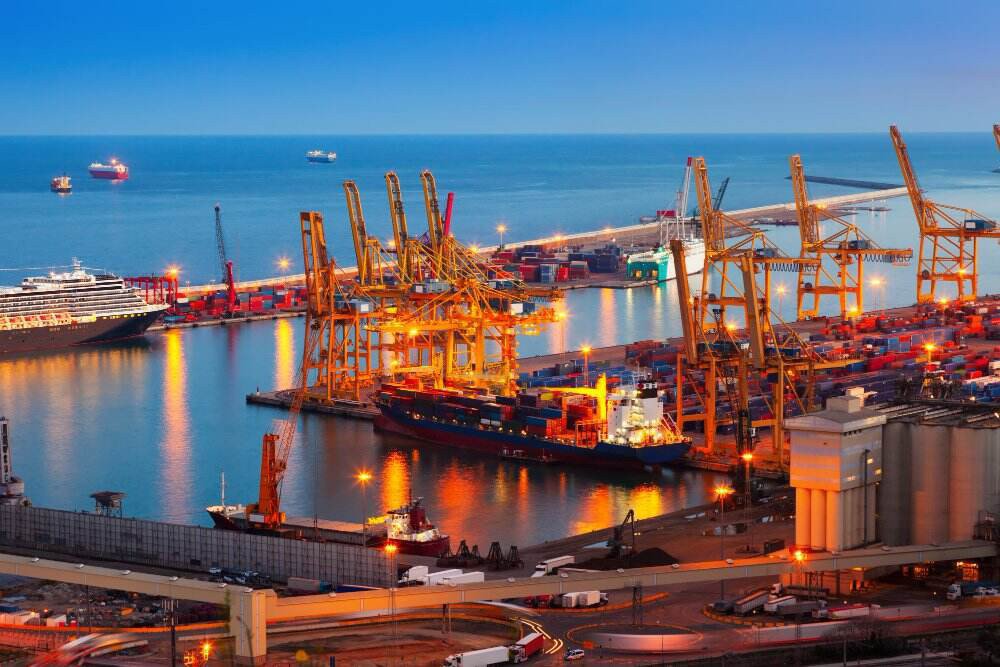
The demand for the ocean transportation sector to prioritize sustainability has risen over the past few years. Ocean freight shipping, which accounts for over 80% of global merchandise trade volume, is essential to international trade. However, this vital sector of the economy also makes a sizable contribution to carbon emissions, which have an effect on the climate and environment. Shippers must take proactive steps to lessen their carbon footprint as sustainability becomes an urgent concern. Using topics like ocean freight rates, sea freight tracking, sea freight charges, ocean shipping lines, and sea freight shipments as our main focus points, we will examine how shippers can embrace sustainability in ocean freight shipping. By putting these tactics into practice, shippers can help create a greener and more sustainable future.
What Does Reducing the Carbon Footprint of Ocean Freight Look Like?
Due to the global reliance on this form of transportation, lowering ocean freight's carbon footprint is challenging. The good news is that ships' carbon dioxide emissions per ton of cargo per kilometre decreased by about 20–30% between 2008 and 2019.
One way to lower ocean freight costs is in this area. Future developments in the industry could include the use of more energy-efficient vessels and renewable energy sources. However, shippers and BCOs must also make choices related to the purchase of freight that reduces emissions.
- Choose more fuel-efficient ships: Choosing more fuel-efficient ships that emit fewer emissions can cut carbon footprints significantly. This considers ships with cutting-edge technology, like hybrid or LNG-powered ships.
- Routes for shipping should be optimized because doing so can reduce fuel usage and minimize journey distances. The software systems that optimize routes based on variables like weather, currents, and congestion can be used by shippers in conjunction with carriers.
- Consolidate shipments: Using shared container space or combining multiple shipments into fewer containers can maximize vessel capacity, lowering the number of trips and overall emissions.
- Use environmentally friendly packaging: Using environmentally friendly packaging materials and designs can cut waste and lessen the overall impact of moving goods on the environment.
How can shipping be sustainable?
While achieving complete carbon neutrality for sea freight shipments may be challenging, shipping can be more sustainable by implementing supply chain sustainability practices, such as:
- Utilizing the least harmful freight mode (or modes) possible
- Deciding on distribution locations for a greener network by considering their proximity
- Choosing packaging materials that are environmentally friendly and have efficient designs
- ensuring that trailers and containers are completely filled to prevent wasting energy transporting empty or only partially loaded containers
- Routes should be optimized to reduce travel time and potential congestion.
To elaborate on these, intermodal shipping is the best option for overland shipping to reduce environmental impacts. Ocean freight far outperforms air freight for even longer distances, such as international shipments. Sustainable packaging entails selecting the best materials for both shipping and packaging goods.
Optimize Container Loading and Route Planning
Planning routes and loading containers efficiently are essential for cutting carbon emissions. Shippers can maximise container utilisation by maximizing cargo capacity, reducing empty space, and avoiding unnecessary trips. Modern planning tools and technologies, like container tracking systems, can help to synchronize processes, reduce delays, and use less fuel.
Embrace Energy-Efficient Vessels
Partnering with ocean shipping companies that run energy-efficient vessels should be a top priority for shippers. These vessels use cutting-edge techniques like slow steaming, which lowers fuel use and emissions. Businesses can also look into alternative fuel sources to power their fleets, such as liquefied natural gas (LNG) or biofuels, which can help them lower ocean freight rates. A sustainable future for ocean freight shipping also requires promoting the development of zero-emission ships, such as those powered by electricity or hydrogen.
Utilize Intermodal Transportation and Sustainable Ports
Carbon emissions can be decreased by combining intermodal transportation with ocean freight shipping. Shippers can reduce their reliance on trucks, a significant source of air pollution, by using rail or barge services for inland transportation. Additionally, choosing environmentally friendly ports with eco-friendly infrastructure, like shore power stations for ships, can greatly reduce emissions during port operations.
Implement Green Supply Chain Practices
Shippers can use sustainable supply chain techniques to reduce their negative environmental effects. This entails working with vendors who place an emphasis on sustainability, encouraging the use of recyclable or biodegradable packaging, and improving inventory control to cut waste. By recovering and recycling materials, efficient reverse logistics systems can also lessen the need for new production and waste generation.
Monitor and Report Carbon Footprint
To track development and pinpoint areas for improvement, carbon emissions must be routinely measured and reported. Shippers need to implement trustworthy tracking and reporting systems that accurately calculate their carbon footprint. By establishing emission reduction goals and transparently reporting their progress, companies can demonstrate their dedication to sustainability and inspire other companies in the industry to do the same.
Conclusion
Shippers cannot shirk their shared obligation to maintain a sustainable ocean freight shipping industry. Shippers can significantly lower their carbon footprint by embracing environmentally friendly practices and technologies, optimizing container loading and routes, utilizing energy-efficient vessels, integrating intermodal transportation, and implementing green supply chain practices.
Additionally, reporting and monitoring emissions will promote accountability and ongoing development. Adopting sustainable practices improves brand reputation, lowers operational costs, positions shippers for changing regulatory requirements, and benefits the environment. Together, shippers can build a more environmentally friendly future for ocean freight shipping and contribute to a more sustainably managed planet.





 Get instant quote
and compare offers in real time
Get instant quote
and compare offers in real time